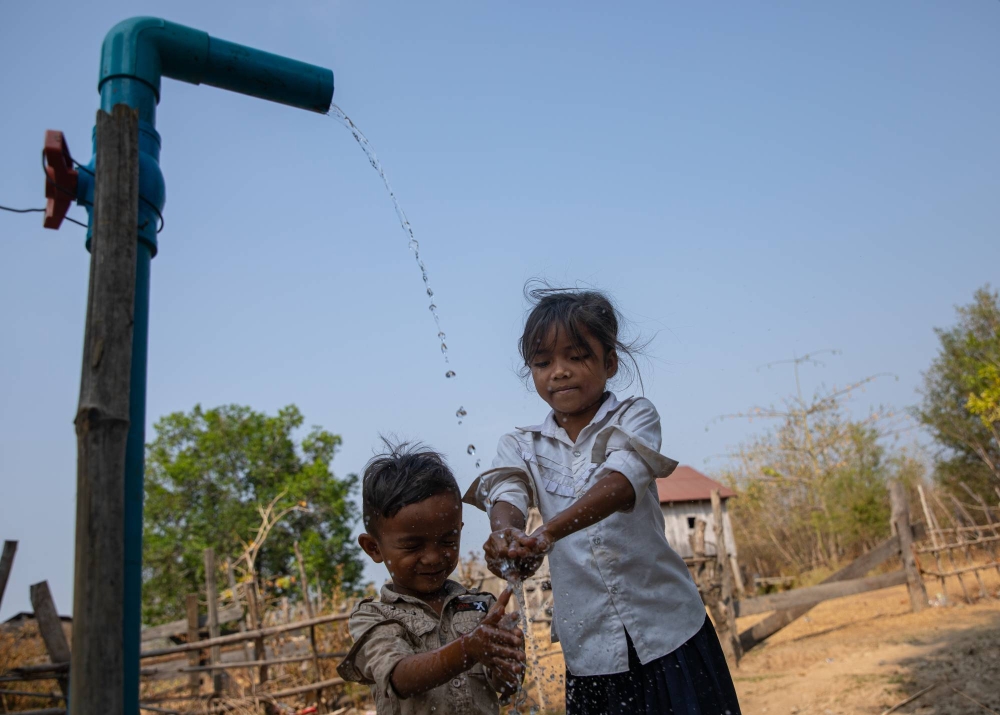Eleven-year-old In Kao brushes up against tree branches from his perch atop a 2,000-liter tank as he fills it with unfiltered water from the Mekong River.
When not in school, the young boy delivers river water to many residents of Inn Chey village, one of around seven Indigenous Kuy communities in Cambodia’s Kratie Province.
Water access — and the fraught nature of it — is a defining aspect of life in Inn Chey, explains San Vansen, a village leader. Before a new dirt road was dug last year, the village was completely inaccessible by land during the monthslong rainy season, which generally stretches from May to October.
Vansen watches as Kao drives his power tiller, which pulls the enormous, sloshing water tank.
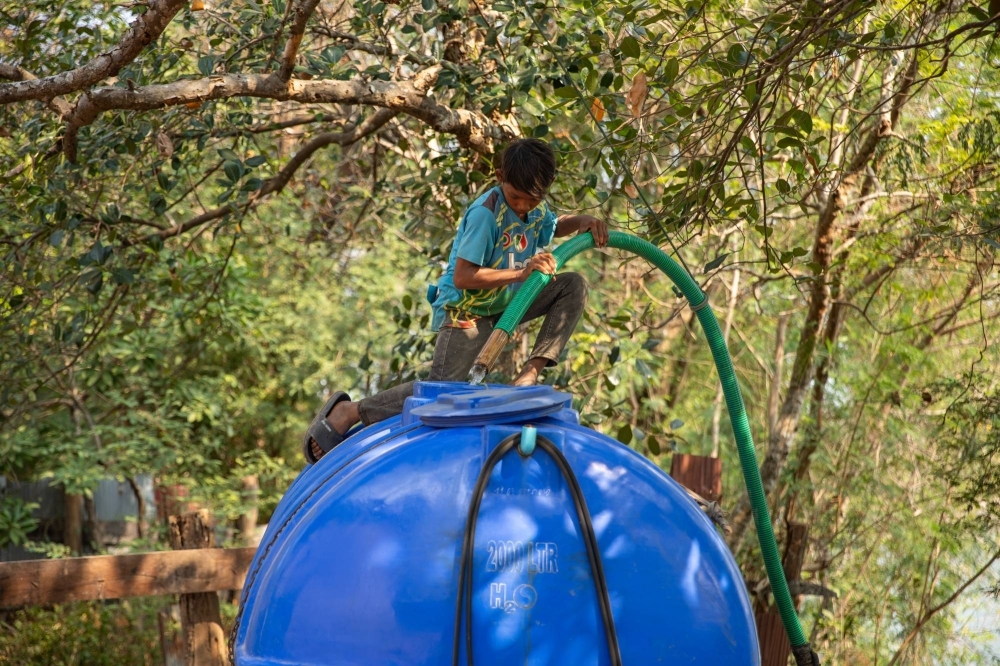
Eleven-year-old In Kao sits atop the 2,000-liter tank he is filling with unfiltered water from the Mekong River, which he will personally deliver to homes around Inn Chey in Cambodia’s Kratie Province.
| Anton L. Delgado
Journeys to and from the river on rough, eroding roads in jerry-rigged vehicles have long been deadly in Inn Chey. In 2021, Vansen’s granddaughter was killed in a motorcycle accident while returning from collecting water. Last year, her grandson died after his tiller flipped on his way to do laundry in the river.
Those deaths are why Vansen was the first to connect to a new, Japan-backed climate resilient water system in Inn Chey, implemented by UNICEF in Cambodia.
“At first, the families in the community were wary of connecting to the water supply. Many wanted others to go first,” Vansen says. “I encouraged everyone, including my own children, to connect. We need to avoid more water accidents. We have lost enough.”
To help address those losses, Japanese businesses and government agencies are pouring billions of yen into various programs across Cambodia and Southeast Asia to reduce the risk of disasters and improve water access, sanitation and hygiene.
From the water pipes in Inn Chey to developing new water management laws and constructing a multi-billion yen water treatment facility, climate resilience is a growing priority in Japanese foreign aid. Experts say this donor shift will need extra emphasis in Southeast Asia, which is among the world’s most climate-vulnerable regions.
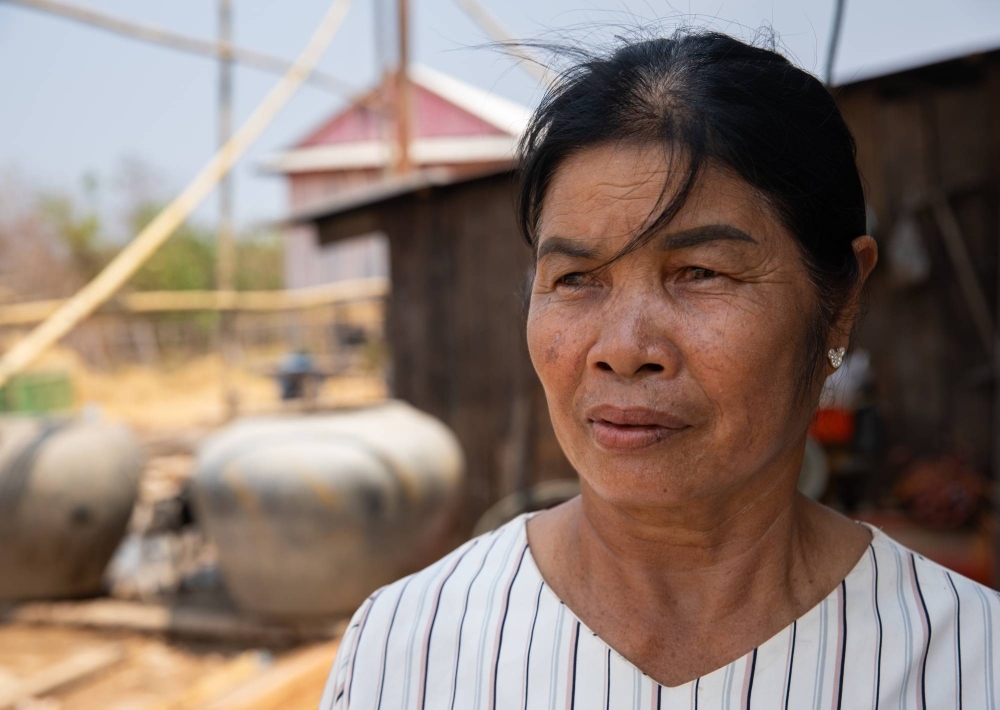
San Vansen, a Kuy leader in Inn Chey, has lost two grandchildren to water access-related vehicle accidents in Cambodia’s Kratie Province.
| Anton L. Delgado
This focus on climate resilient infrastructure stems from both Japan’s climate commitments and its own hard-learned lessons.
“We have been a natural disaster-affected country for centuries. It is natural that we can help others by using what we have learned,” says Asagi Miyoshi, a counselor with the Japanese Embassy in Cambodia. “But in the past decade, things are getting a bit strange, things are changing.”
Southeast Asia has marched to the drumbeat of development for decades, but this thirst for infrastructure is facing major headwinds amid the climate crisis.
“If you see the development and demography trends, it is very evident to see that the Asia-Pacific region — especially Southeast Asia and South Asia — is booming,” says Mohammed Narul Alam, a resilient infrastructure specialist for the Asian Disaster Preparedness Center. “The next world economy is over here. Unfortunately, this whole region also sits on a climate crisis hot spot.”
A lifeline
In Cambodia, on remote stretches of the Mekong, the narrative of changing climates is passed through stories handed down from grandmothers to grandchildren.
Sat Sinri has lived in Inn Chey for more than 40 years. While Facebook, smartphones and power generators have drastically altered the Kuy heartland in recent years, the village had remained disconnected from clean water. For most of Sinri’s life, paying her neighbors — like the young Kao — the 15,000 riels (about $3.70; ¥560) fee to deliver river water was financially out of the question.
“I used to carry water myself and I was always so tired. When I couldn’t, I asked my grandson to do it,” says Sinri, who recalled days when she made three to four trips to the river. “I was really afraid for my health, especially as I got older. What if I got sick and we could not get water?”
Now, her home is one of the 16 connected to UNICEF’s new water system in Inn Chey, which was partially funded by the Japanese retail giant Aeon’s 1% Club Foundation.
While the 19-liter paint bucket Sinri once used to carry water has been repurposed into a makeshift seat for her grandson, access to clean water continues to plague Cambodia’s isolated communities.
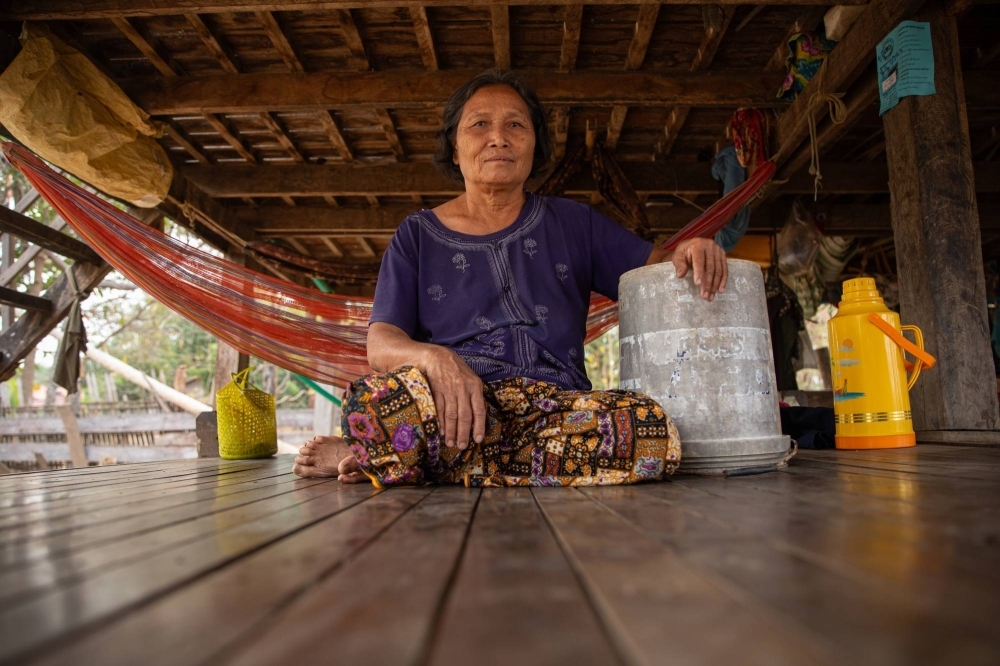
Sat Sinri used to spend hours hauling unfiltered water from the Mekong River to her home in Inn Chey in Cambodia’s Kratie Province with a re-used five-gallon paint bucket. That chore is now unneeded thanks to the village’s new water system.
| Anton L. Delgado
There are roughly 50 other communities in Kratie Province alone that, like Inn Chey, face barriers to clean water, according to Vibol Kao, who leads the Rural Water Supply Office for the Provincial Department of Rural Development, which manages the village’s new water system.
“The majority of the population in rural areas have limited access to water supply,” says Kao, adding that this was a nationwide issue. Kao, who has been with the water office for more than a decade, believes climate change is “one of the major causes of the limited access to water.”
The onset of the El Nino climate pattern last year has prolonged Cambodia’s dry season, according to Kao, who says this has lowered the Mekong’s water level and made groundwater reservoirs “far more difficult to reach.”
“The work to set up water supply has become more difficult because we need to make sure the construction is climate resilient,” says Kao, who explained this naturally made the process more expensive and time-consuming. “The people lack knowledge about climate change and they are not yet ready to adapt to climate change.”
Michele Paba, the chief water, sanitation and hygiene (WASH) officer at UNICEF Cambodia, explains that “climate resilient” and “climate smart” design is a key feature in the agency’s new multimillion-dollar, four-year country program.
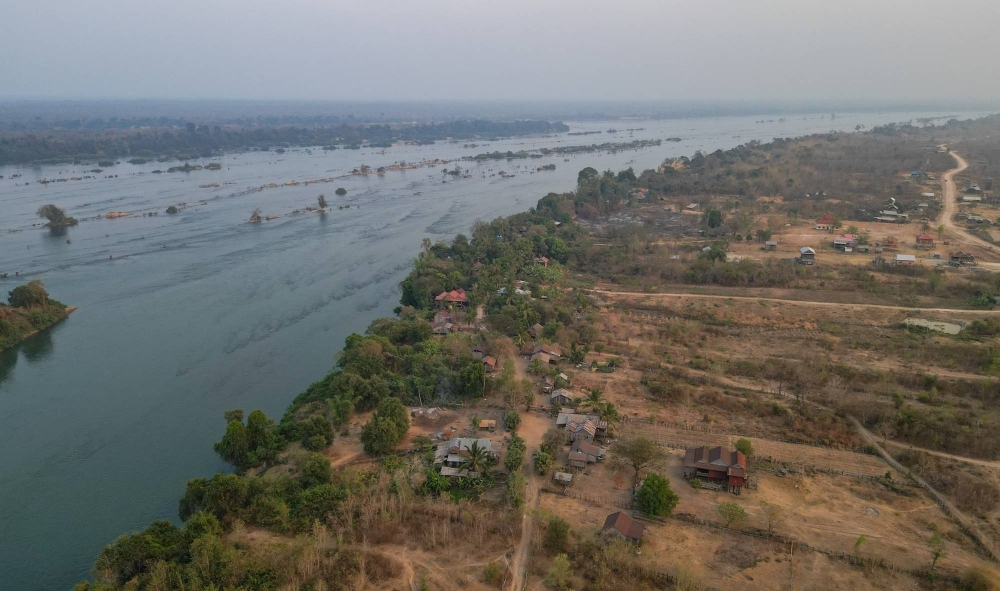
Inn Chey, one of an estimated seven communities in Cambodia’s Kratie Province that are almost entirely from the Kuy ethnic minority, is isolated on the banks of the Mekong River. Until last year, the village was completely inaccessible by land during the rainy season.
| Anton L. Delgado
A draft of this new country program stated that Cambodia’s “vulnerability to climate change, environmental hazards and natural disasters will be mitigated through regular situation monitoring, strengthening of UNICEF and inter-agency early warning and emergency preparedness platforms, and support to national risk reduction and climate-resilience initiatives.”
Besides the pump of the new water system in Inn Chey being solar powered, local government officials were also trained to conduct a pumping test to assess the well’s ability to sustainably supply water, prior to constructing the well. To survive severe droughts, the well in Inn Chey was dug at nearly twice the depth of others in the surrounding area. Meter-high walls were also built around the mouth of the well to keep river water at bay in case of severe floods.
“We don’t have a crystal ball, but we can easily understand the common sense that we have to live with climate change,” Paba says. “The path is quite erratic, we cannot predict what is going to happen. So, we have to prepare for the worst.”
In 2022, Japan provided the largest contribution, to the tune of $9.6 million, to UNICEF projects addressing WASH, climate, environment, energy and disaster risk reduction programs in East Asia and the Pacific, with millions sent to other Southeast Asian nations such as Myanmar, Indonesia, Laos, Thailand and the Philippines.
UNICEF Cambodia is receiving approximately $1 million from the Japanese government over the next three years, making up around 20% of the entire annual WASH budget.
“Japan is somewhere in the middle of advancement on climate change,” says the Japanese Embassy’s Miyoshi. “We would like to bridge the gap between developing countries and the most developed countries in that sense.”

San Vansen (right), an Indigenous leader of the Kuy community in Cambodia, walks with a field officer from UNICEF in Inn Chey village in Kratie Province.
| Anton L. Delgado
Last December, Japan inaugurated a ¥2.8 billion sewage facility in Phnom Penh, which was contracted to Japanese companies operating in Cambodia, like the manufacturing giant Kubota and engineering group Metawater.
Cambodia also passed its first Clean Water Management Law last year with the support of the Japan International Cooperation Agency (JICA), which was the first time that the state-backed agency aided the formulation of laws specifically pertaining to water supply.
“The sewage system is an essential piece of water management,” Miyoshi says. We believe that having a comprehensive water management structure leads Cambodia to a more climate change resilient society.”
Lessons from a disaster
The Great East Japan Earthquake and subsequent tsunami in 2011 was a watershed moment for Japan, leading to the establishment of the International Research Institute of Disaster Science at Tohoku University.
This domestic research is now being integrated into Japan’s policies for foreign aid in what Miyoshi calls a natural next step.
“Japan experiences a lot of natural disasters. We have knowledge, technology and know-how. It is natural that we can help others by using what we have learned,” Miyoshi says. “The types of natural disasters are not exactly the same from Japan to Southeast Asia. Each time there is a natural disaster, we adjust to the situation there and hear from each government what they need.”
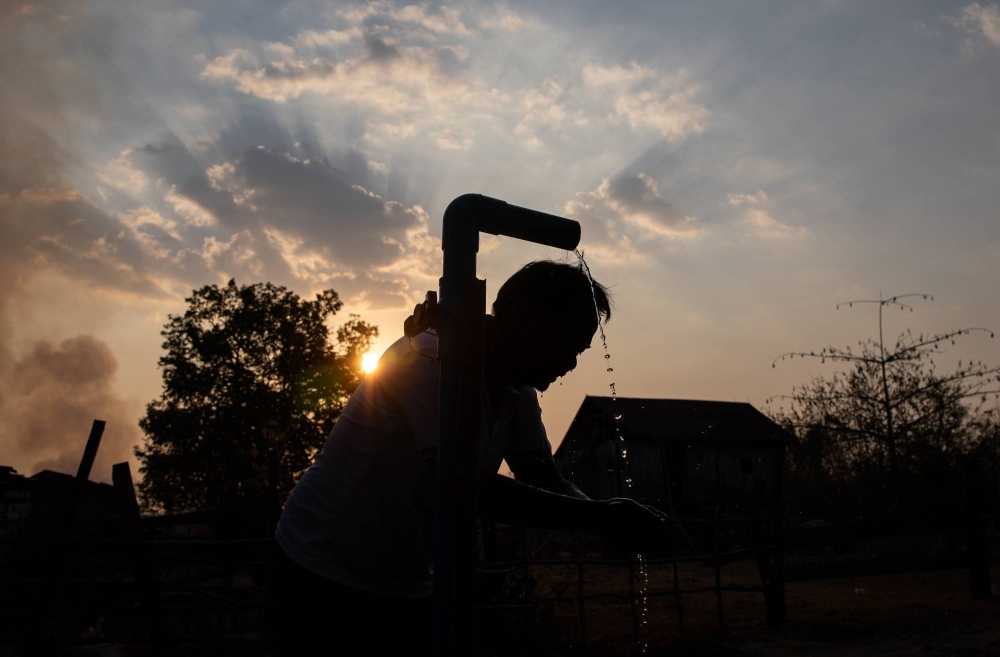
Vibol Kao, who leads the Rural Water Supply Office for Kratie’s Provincial Department of Rural Development, washes his face from a public pump set up as a part of a new climate resilient water system in Inn Chey.
| Anton L. Delgado
According to Nurul at the Asian Disaster Preparedness Center, the region is far more aware of the needs and benefits of climate resilience nowadays. He says that governments “know if they put $1 right now in the adaptation stage, prior to construction, they will save multiples of far more than $1 in the future.”
But even with the support of governments, Nurul points to a “huge gap of tools and technology” in the climate resilience sector.
“There is actually a mismatch,” Nurul says. “The problem is the pace of development and the pace of climate adaptation and resilience research is not going hand-in-hand. The research level, the tools development level, is going very slowly compared to the pace of the development.”
Especially with this lag, Nurul warns that researchers and companies dealing with climate resilience must be willing to constantly adapt as they try to address the ways in which the climate crisis will affect Southeast Asia now and far into the future.
“Infrastructure should not be designed as a cookie cutter. They should be designed based on the climate extremes it may go through in those areas so that the climatic issues are not impacting you as much,” Nurul says. “You can’t resolve climate extremes 100%, but you can reduce the climate impact in the future.”
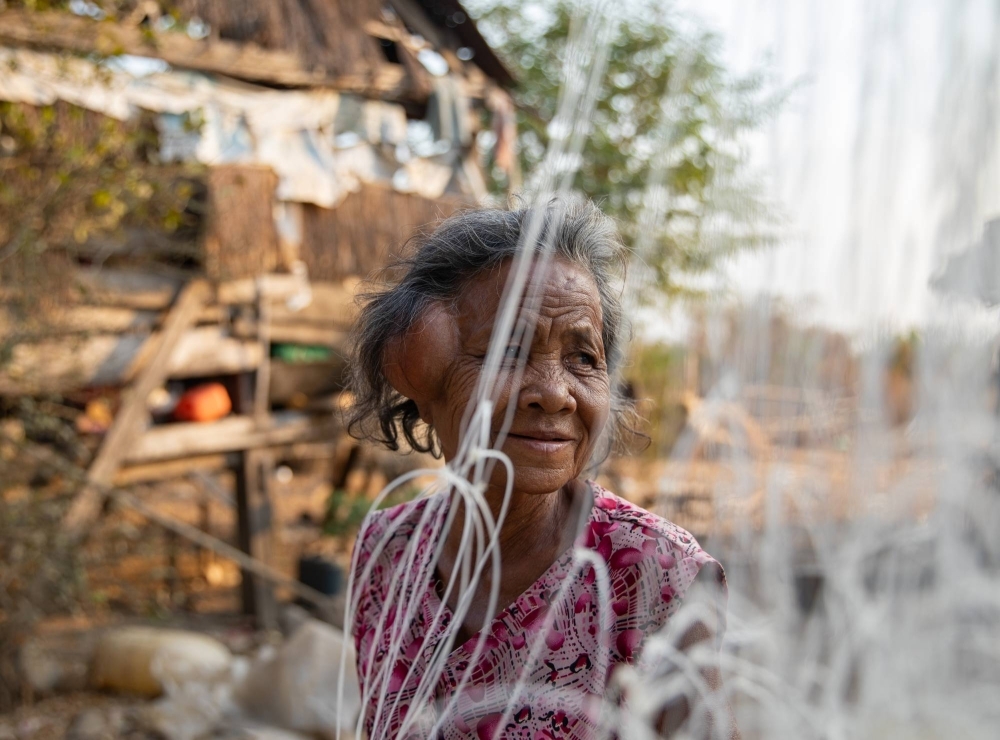
Srey Yen, a 75-year-old who has lived in Inn Chey for more than four decades, untangles fishing hooks to aid fishers bound for the Mekong River.
| Anton L. Delgado

